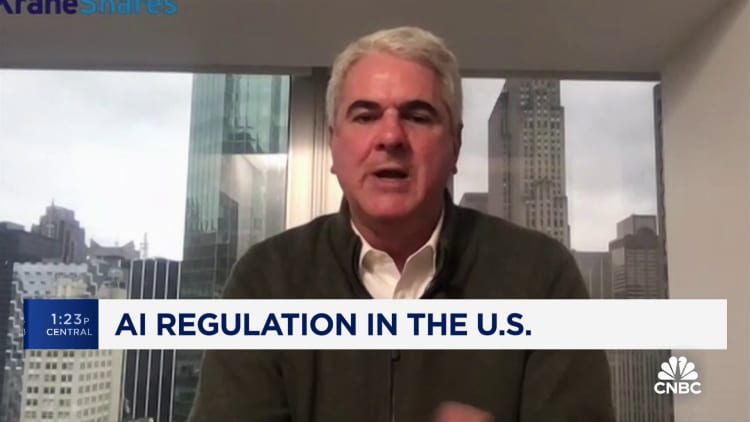[ad_1]
Chinese Minister of Public Security Wang Xiaohong (C) announces the launch of the U.S.-China Counternarcotics Working Group next to U.S. Deputy Assistant to the President and Deputy Homeland Security Advisor Jen Daskal (center L) at the Diaoyutai State Guesthouse in Beijing on January 30, 2024.
Ng Han Guan | Afp | Getty Images
BEIJING — The U.S. and China had a “productive” first day of talks in Beijing about the fentanyl crisis, Jennifer Daskal, a deputy homeland security advisor, told NBC News’ Janis Mackey Frayer in an exclusive interview Tuesday.
“We’re looking for results and we had a productive step forward,” Daskal said, while acknowledging the risk that China could use its sway over the fentanyl supply chain as a bargaining chip.
Fentanyl, a synthetic opioid, is an addictive drug that’s led to tens of thousands of overdose deaths each year in the U.S.
Reducing illicit supplies of the drug, precursors of which are mostly produced in China and Mexico, has become an area in which Washington and Beijing have agreed to cooperate.
It comes amid an otherwise fraught bilateral relationship.
U.S. President Joe Biden and Chinese President Xi Jinping agreed at their meeting in San Francisco in November to establish a working group on drug control.

In an official readout of Tuesday’s meeting, Wang Xiaohong, director of China’s National Narcotics Control Commission, said he hoped both sides would “inject more positive energy” into the stable development of U.S.-China relations.
Wang is also the Minister of Public Security.
The Biden administration in November removed the Ministry of Public Security’s Institute of Forensic Science of China from a blacklist known as the entity list, in effect lifting sanctions on its narcotics lab.
That removal allows China’s National Narcotics Lab to repair or buy new equipment — mostly made in the U.S. — and reduce delays in research, lab director Hua Zhendong told NBC News’ Mackey Frayer.
Greater bilateral cooperation allows the two countries to exchange information about drugs more easily, Hua said.
“Only through the information exchange could we know which substance is now a key problem in the U.S., because it’s only evolving.”
‘More needs to be done’
The two-day meeting that kicked off Tuesday was billed as the “Inauguration of the China-U.S. Counternarcotics Working Group.”
Daskal, leader of the White House delegation for this week’s high-level talks, said the diversity of representatives from both sides “showed a real commitment.”
“We will know if it works if we start seeing the supply of precursor drugs diminish, if we start seeing the supply of pill presses and other equipment diminish,” Daskal said. She pointed out that Beijing has already sent notices to Chinese companies that make precursors for fentanyl, and that incidents are being reported to the International Narcotics Control.
“There’s obviously more that needs to be done,” she said.
It’s unclear to what extent Beijing is willing, or able, to act.
Earlier this month, Yu Haibin, deputy secretary-general of the National Narcotics Control Commission, told NBC News that the “root cause” of the fentanyl crisis lies within the U.S.
“Demand needs to be reduced, as controlling demand will naturally curb supply,” Yu told NBC’s Mackey Frayer.
“I want to emphasize the global nature of drug crimes. These criminals work very closely together. Our law enforcement agencies need to collaborate even more closely than the criminals so there can be a robust response to these crimes,” Yu said.
He is also deputy director general of the Ministry of Public Security’s Narcotics Control Bureau.
Asked about the issue of U.S. fentanyl demand, Daskal said the two delegations spent most of Tuesday discussing “the fact that this is a problem of both demand and supply.”
“We talked about the need … to address the supply of the pill, process and other equipment that are used to manufacture these deadly drugs, and to often hide them and create fake pills that look like they’re other things [that] turned out to be deadly fentanyl,” Daskal said.
[ad_2]
Source link

